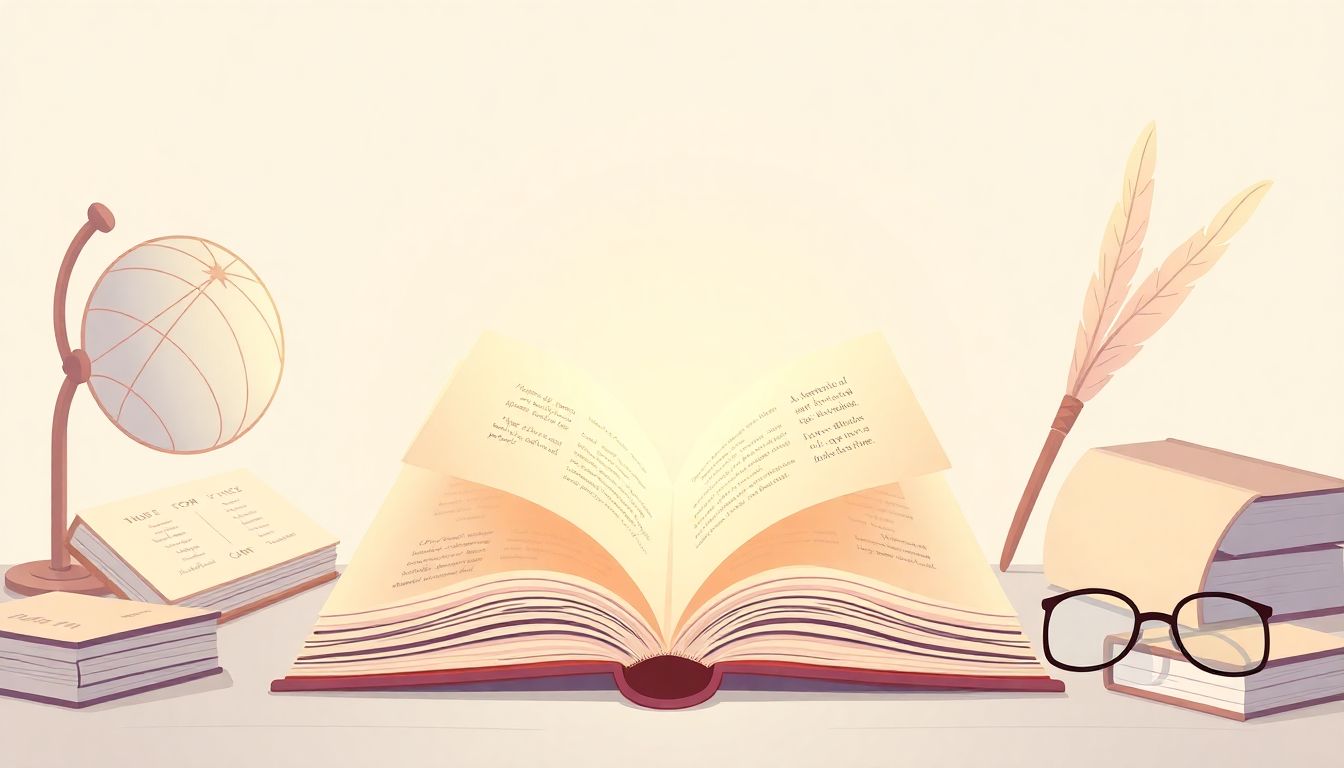Complete AI Prompt Pack
1000+ prompts • $37
Are you struggling to come up with engaging topics for your literature circles? You’re not alone; many teachers and readers find it challenging to spark meaningful discussions that keep everyone interested. It’s easy to fall into a rut with the same questions and themes, right?
But don’t worry! If you stick around, I’ll share a treasure trove of creative prompts and tips that will breathe new life into your literature circles. Imagine your group diving into fascinating discussions that not only enhance understanding but also make reading fun!
We’ll explore effective strategies for choosing topics, engaging roles, and tackling common obstacles. By the end, you’ll have all the tools you need to turn your literature circles into lively, enriching experiences.
Key Takeaways
- Use creative prompts like character conflicts and themes to spark literature circle discussions.
- Create small groups (4-6 students), assigning distinct roles to encourage participation and accountability.
- Incorporate reflections after each session to help students articulate their learning and experiences.
- Encourage diverse reading materials and open-ended questions to promote critical thinking and engagement.
- Utilize genre-specific prompts and ChatGPT for tailored discussion questions and role assignments.

Prompts for Literature Circle Topics
Looking for fresh ideas to spark your literature circles? Here’s a list of engaging prompts that will get your discussions rolling.
- Identify a character’s main conflict: Analyze how the conflict shapes their actions throughout the story.
- Discuss themes: What is the central theme of the book, and how does it relate to today’s world?
- Compare and contrast characters: Pick two characters and explore their differences, similarities, and development.
- Explore the author’s style: How does the author’s writing style contribute to the mood of the story?
- Connect the book to personal experiences: Share a past experience that resonates with the story or characters.
And if you want to kickstart an engaging conversation using ChatGPT, try these prompts:
Generate a list of themes present in "The Great Gatsby".Identify and analyze the main conflict faced by the protagonist in "To Kill a Mockingbird".What are some quotes from "1984" that illustrate the concept of surveillance and control?Compare the moral dilemmas faced by characters in "The Catcher in the Rye" and "The Bell Jar".Identify the author's writing style in "Pride and Prejudice" and discuss how it shapes the story's themes.
How to Use Literature Circles Effectively
To use literature circles effectively, you need to create a structure that encourages collaboration and deep discussion among participants.
Start by forming small groups, ideally 4-6 students, where each member gets to speak and share their insights.
Set clear roles such as discussion leader, note-taker, summary presenter, and questioner to ensure everyone stays engaged.
Use a rotating schedule to allow different students to take on various roles during different discussions.
Encourage students to prepare notes or questions ahead of time to facilitate smooth conversations.
The discussion should always align closely with the reading material to deepen understanding and analysis.
Finally, incorporate reflections at the end of each session so students can articulate what they learned and how they felt participating.
Benefits of Literature Circles in Learning
Literature circles offer numerous benefits that enhance the learning experience for students.
First and foremost, they promote critical thinking as students analyze and discuss different perspectives on a text.
These circles also foster collaboration and communication skills, as participants must articulate their thoughts and listen to others.
Additionally, literature circles can increase student engagement by allowing choice in reading materials and discussion formats.
By engaging with diverse texts, students broaden their understanding of culture and society, which can enhance empathy.
Finally, the informal setting of literature circles reduces anxiety around discussions, making it easier for students to express their ideas and interpretations.
Ideas for Literature Circle Discussion Questions
Crafting effective discussion questions is key to stimulating meaningful dialogue in literature circles.
Here are some thought-provoking queries to consider:
- How does the setting of the story influence the characters’ decisions?
- What surprising moments in the text changed your understanding of the characters or plot?
- In what ways do the characters evolve by the end of the story?
- What motifs can you identify, and how do they contribute to the overall theme?
- What would you change about the plot if you could rewrite the ending?
To take this further, you can utilize ChatGPT with these specific commands:
Create a discussion question about character development in "The Kite Runner".Generate a list of open-ended questions for "The Book Thief".What themes can you explore in "The Lord of the Flies" through discussion questions?Formulate a question that links the themes of identity in "The Hate U Give".Draft an inquiry question for discussing family dynamics in "Little Fires Everywhere".

Sample Prompts for Different Genres
Different genres offer unique avenues for discussion in literature circles.
Here are some genre-specific prompts to help your group dive deeper into readings:
- Fiction: Analyze a pivotal scene and discuss how it alters the character’s arc.
- Nonfiction: What is the author’s purpose, and how effectively do they achieve it?
- Poetry: Choose a poem and dissect its imagery; how does it enhance the meaning?
- Mystery: What clues does the author plant, and how do they contribute to the suspense?
- Fantasy: Discuss how the fantastical elements reflect real-world issues.
For an engaging experience, you can command ChatGPT to generate tailored prompts with these examples:
Provide a discussion prompt for a fictional work about loss and redemption.Generate questions to analyze the themes of identity in a memoir.What elements of magical realism can you identify in a fantasy novel?Create a prompt to explore the structure and form of a well-known poem.Suggest discussion points for a thriller focusing on moral dilemmas.
Creating Engaging Literature Circle Roles
Assigning specific roles in literature circles keeps discussions dynamic and ensures varied perspectives.
Here are some roles to consider:
- Discussion Leader: Guides the conversation with prepared questions.
- Note-Taker: Records important points and quotes from the discussion.
- Summarizer: Provides a brief recap of the previous session’s key insights.
- Connector: Links themes in the book to current events or personal experiences.
- Questioner: Asks thought-provoking questions to deepen analysis.
To get your literature circle started, use these prompts with ChatGPT:
Assign roles in a literature circle for "The Alchemist" and describe each role’s responsibilities.Create role descriptions for a fiction book discussion group.What roles would enhance discussions for a nonfiction text on climate change?Generate ideas for unique literature circle roles to spark engagement.How can assigning roles improve understanding in a poetry discussion?
Tips for Guiding Literature Circle Conversations
Guiding literature circle conversations effectively is crucial for a productive discussion.
Here are some tips to help guide your sessions:
- Begin with a brief overview of the last discussion to connect previous thoughts.
- Encourage all members to share their opinions, reminding quieter participants to contribute.
- Use open-ended questions to push deeper analysis and avoid simple yes/no answers.
- Be attentive to group dynamics; if tensions arise, redirect discussions toward common ground.
- Wrap up conversations by summarizing key takeaways to reinforce learning.
Enhance these conversations further with ChatGPT prompts like:
Generate open-ended questions based on the ending of "The Great Gatsby".Create a guide for leading effective discussions on "To Kill a Mockingbird".How can I encourage participation among shy students in a literature circle?Develop strategies to maintain focus during discussions on complex texts.Draft techniques for resolving conflicts during literature circle discussions.

Common Challenges in Literature Circles and Solutions
Literature circles, while beneficial, can present some challenges that educators and students need to navigate.
One common issue is unequal participation, where a few students dominate the conversation while others remain silent.
To combat this, establish clear expectations for participation, and rotate roles regularly to give everyone a chance to contribute.
Another challenge is students struggling to connect with the material, which can lead to disengagement.
Encourage students to select texts they are genuinely interested in, or offer a choice among several options to boost motivation.
Discussions can also veer off track, making it hard to dig into the text meaningfully.
Implementing a discussion protocol that includes guiding questions can help keep the conversation focused.
If conflicts arise during discussions, address them calmly and redirect the conversation to shared themes or insights.
Lastly, evaluating literature circles can be tough; consider using peer feedback along with self-reflection to assess group dynamics and individual contributions.
For additional support, try using ChatGPT with these prompts:
List common challenges in literature circles and suggest solutions.What strategies can help promote equal participation in literature discussions?Generate tips for keeping literature circle discussions on track.How can I encourage reluctant students to engage in group conversations?Provide conflict resolution strategies for literature circle leaders.
Resources for Selecting Texts for Literature Circles
Selecting the right texts for literature circles is crucial for fostering engaging discussions and insights.
Start by considering the interests and reading levels of your students to ensure the material resonates with them.
Look for diverse perspectives in literature to expose students to a variety of cultures and themes.
Also, use recommended reading lists from educational websites, libraries, and teaching organizations as a guide.
It’s beneficial to incorporate modern literature alongside classic texts to keep discussions fresh and relevant.
Additionally, consider consulting book review websites to find critically acclaimed works that fit well within your objectives.
Using ChatGPT, you can easily generate specific recommendations:
Suggest diverse novels suitable for middle school literature circles.Recommend nonfiction texts suitable for high school students.Provide a list of classic literature that engages students in discussions.What are some contemporary books that tackle social issues for literature circles?List age-appropriate graphic novels for young readers’ literature discussions.
How to Assess Literature Circle Participation
Assessing literature circle participation can be tricky, but it’s essential for understanding student engagement.
Start by defining clear criteria for participation, which can include contributions to discussions, role fulfillment, and engagement with the text.
Consider using a simple rubric that rates students on a scale from passive to highly engaged, based on observable behaviors.
Peer feedback can be instrumental; ask students to evaluate each other’s contributions to promote accountability.
Encourage self-reflection by having students keep journals where they record their thoughts on their participation and learning.
Regular check-ins can also help you gauge understanding and adjust your instruction as needed.
To assess more effectively, try these ChatGPT prompts:
Create a rubric for assessing student participation in literature circles.Generate self-reflection questions for literature circle members.What criteria should I include for evaluating literature circle contributions?Provide peer feedback guidelines for discussing literature circle roles.How can I track student engagement in group discussions effectively?
FAQs
Literature circles are small, student-led discussion groups focused on a shared reading. Participants take on specific roles to encourage engagement, exploration, and deeper understanding of the text through collaborative discussions and activities.
Literature circles promote critical thinking, enhance communication skills, and foster a love for reading. They encourage peer interaction and collaborative learning, allowing students to share diverse perspectives and deepen their comprehension of texts.
Assessment can be conducted through self-assessments, peer evaluations, and teacher observations. Use rubrics to assess contributions, interaction quality, and understanding of the text, ensuring feedback is constructive and encourages growth.
Common challenges include uneven participation, lack of engagement, and difficulty in facilitating discussions. Solutions include clear role assignments, structured guidelines, and providing training on discussion techniques to enhance participant involvement.
Last updated: February 22, 2025
